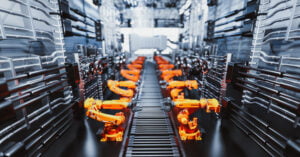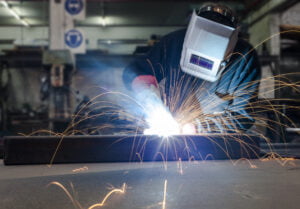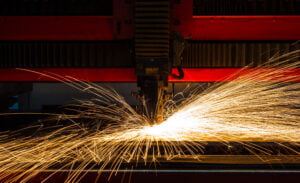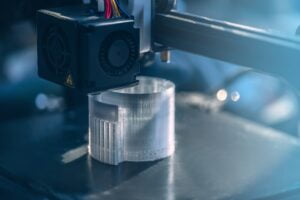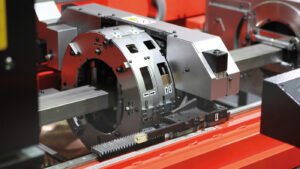What is additive manufacturing?
Additive Manufacture is a method of making three-dimensional objects by adding material until the object is complete. 3D printing is a collection of additive manufacturing methods. 3D printing in general involves layering material until the final part is formed. As this is adding material to build the part, it is a form of additive manufacture.
In general, additive manufacturing techniques can be categorised as one of three forms: sintering; melting, and stereolithography. Sintering involves heating a material, but not liquefying it. A powder is used, with a laser to heat the powder, to allow it to form a solid object. Melting is the process of melting the material through the heat to form a solid object. This is done with the use of a laser or electron beam. Stereolithography uses a process called photopolymerization. A UV laser is fired into a volume of photopolymer resin. This photopolymer solidifies through absorbing the UV light and forms a torque-resistant ceramic object.
Additive manufacturing techniques are ideal for rapid prototyping as AM methods can produce complex parts with very little material waste. As AM technologies use CAD, the design is digitized, allowing for easily made design changes. Also, through AM, complex parts can be formed as a single object, as tooling access isn’t a concern.
What is subtractive manufacturing?
Subtractive manufacture describes any manufacturing process that involves removing material to create a part. Through these methods, a block of material is turned into a part by removing the unwanted material.
Once, this would be done by hand, but with computers came Computer Numerical Control (CNC). CNC feeds instructions to the machine, which are programmed usually through a CAD model. This has improved the accuracy of subtractive manufacture substantially.
One subtractive method is milling. Milling is the process of using a tool to cut away material. Traditional milling machines would be manually controlled, with a human operator turning wheels to move the tool. Modern milling machines normally make use of CNC technology, causing the human operator to become almost redundant. Also, modern milling machines may be called machining centres. These machines are equipped with a drum of tools that the machine can automatically change between. Most are also automation enabled, with the ability to load and unload parts automatically.
Turning is another subtractive method, typically performed using a lathe. The part is attached to a chuck, which rotates when the machine is in operation. A rigid cutting tool is used to carve material from the part. Through this, a cylinder can be cut on the outside or inside.
EDM machining, or electrical discharge machining, is the process of using electricity to remove material from a part. Two electrodes are used, with a rapid pulse of electricity being passed between them. When these electrodes are held on either side of the material, the high current passing through will form an arc, where the electricity jumps through air to complete a circuit. As the arc is obstructed by material, a spark will be formed, which will remove a small amount of material. The electricity pulse will constantly produce sparks with each pulse. EDM machining is especially useful for fragile parts that wouldn’t stand up to tool machining. Also, particularly tough metals are machined this way.
Additive vs subtractive manufacturing
While opposing in method, additive and subtractive methods are generally used together at different stages in the product development cycle.
When prototyping, additive methods are common. Very complex parts can be created this way, and changes to the design can be made quickly and at any time. Plastic additive methods can be very economical when small quantities are required.
As the product development concludes, larger batches of parts are required and they may be metal. This is generally where subtractive methods are used. Subtractive processes can be performed at a higher speed, allowing shorter manufacturing times. 3D printing with metal is expensive compared to traditional subtractive methods, so subtractive would be favoured for all but the most complex metal parts.
Subtractive and additive methods often complement each other as 3D printed parts are ideal when fast, low volume and complex, whereas subtractively produced parts are ideal when high volume is required, or when a part will be under a high level of stress.
Using both methods, resulting in hybrid manufacture, allows design teams to utilise the speed and complexity of additive manufacture and the strength of subtractive. Through this, cost efficiency can increase dramatically across the development cycle.


